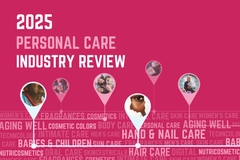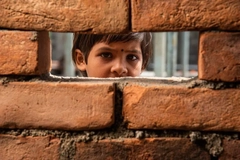“Dermatological deserts:” L’Oréal looks into lack of access to skin disease treatments for billions worldwide

In response to data suggesting scores of people suffering from skin diseases cannot get the necessary treatment, L’Oréal Groupe and the International League of Dermatological Societies (ILDS) are researching ways to improve access to dermatological services.
According to data from The Lancet Global Health Metrics and Freeman E E. Global Health Dermatology, less than half of the two billion people worldwide who suffer from skin diseases have access to the healthcare needed to treat their conditions.
The Global Access to Skin Health Observatory, supported by L’Oréal, will research 194 countries, investigating the global distribution of dermatologists, patient barriers to dermatologic care for skin diseases, and access to “surrogate’” skin health providers in so-called “dermatological deserts.”
Myriam Cohen-Welgryn, President of L’Oréal Dermatological Beauty, says: “Skin diseases affect more than one in three individuals worldwide, posing a significant but often overlooked health challenge. Furthermore, recent studies on its impact showed 88% of people with skin disease said it negatively impacted their personal lives, while 27% reported depression and around 29% claimed anxiety.”
“With billions of people suffering physically and psychologically, the knowledge gained from the Global Skin Health Access Observatory can help improve access to life-changing skin health services by directing resources where they are most urgently needed.”
The collaborators emphasize that no comprehensive view exists about how dermatologic care is accessed and delivered across different populations and regions globally.
 L’Oréal will investigate areas where the dermatologists-to-citizens ratio does not meet the WHO's reccomendations.Dermatological disparities
L’Oréal will investigate areas where the dermatologists-to-citizens ratio does not meet the WHO's reccomendations.Dermatological disparities
L’Oréal Groupe’s Dermatological Beauty division, Skin Alliance Forum will look into regions and medical deserts where the dermatologists-to-citizens ratio is fewer than one for every million. The WHO recommends four dermatologists for every 100,000 people.
ILDS president Henry W. Lim says: “Achieving ILDS’ mission of ‘skin health for the world’ begins with understanding the global landscape of dermatologic care and the disparities in access across regions and populations.”
“This exciting partnership with L’Oréal Dermatological Beauty marks a crucial first step toward this goal. We’re grateful for their commitment to elevating dermatologic care standards worldwide and look forward to working with them on this important initiative.”
Two-phase research
L’Oréal will conduct the study in two phases. The first will span all 194 WHO-recognized member states to define the global, geographic distribution of dermatological care.
The second will provide an in-depth evaluation of dermatological care among the general population and healthcare providers in 30 countries, spanning all income levels and all six WHO regions (Africa, Eastern Mediterranean, Europe, Western Pacific, South-East Asia and the Americas).
The results will be publicly available next year.  People around the world are not able to access the dermatological care they need.
People around the world are not able to access the dermatological care they need.
Esther Freeman, director of Global Health Dermatology at Massachusetts General Hospital, Harvard Medical School and Vice Chair of the International Foundation for Dermatology, adds: “This collaboration between the International League of Dermatological Societies and L’Oréal Dermatological Beauty represents a groundbreaking effort to assess global access to skin health systematically. By establishing a standardized approach, we can better understand the disparities and work toward improving care for all.”
L’Oréal recently made a tri-party agreement with Abolis and global specialty chemicals manufacturer Evonik to boost end-to-end discovery, development and manufacturing of sustainable ingredients for cosmetics.
L’Oréal also recently reported robust financial results for the third quarter of 2024, with sales reaching €32.4 billion (US$34.9 billion), representing a 6% increase on a like-for-like basis and a 6% reported growth.












